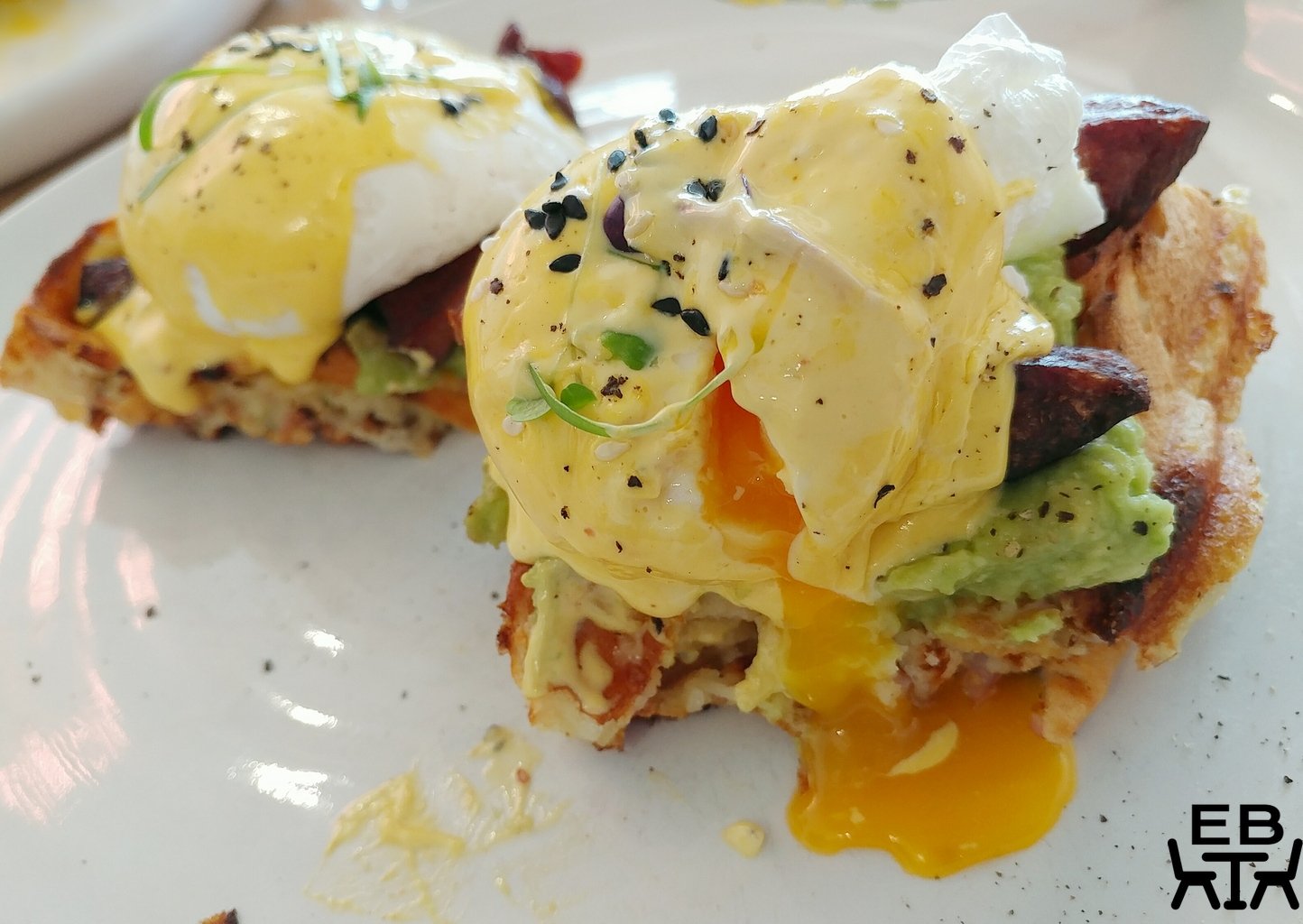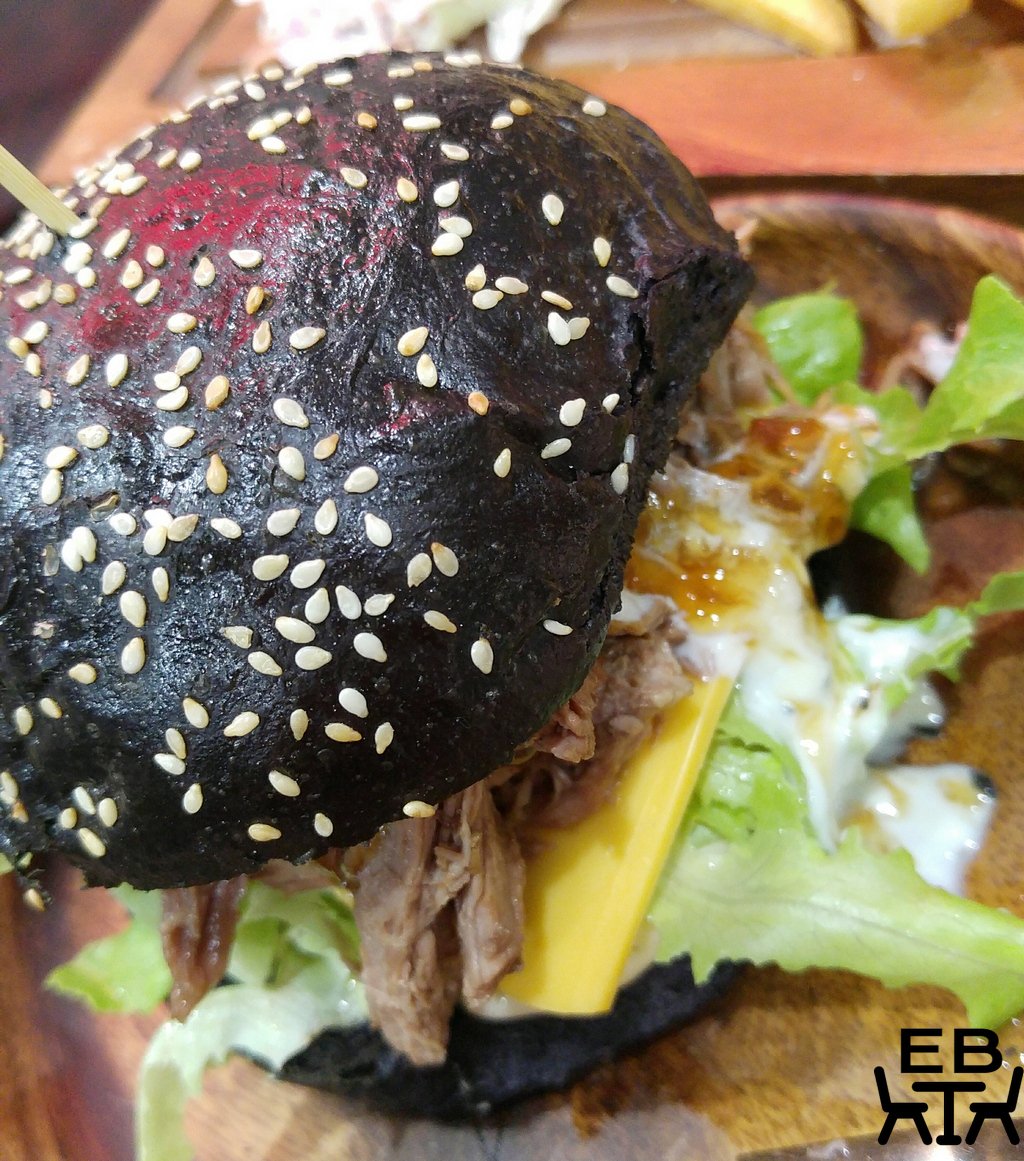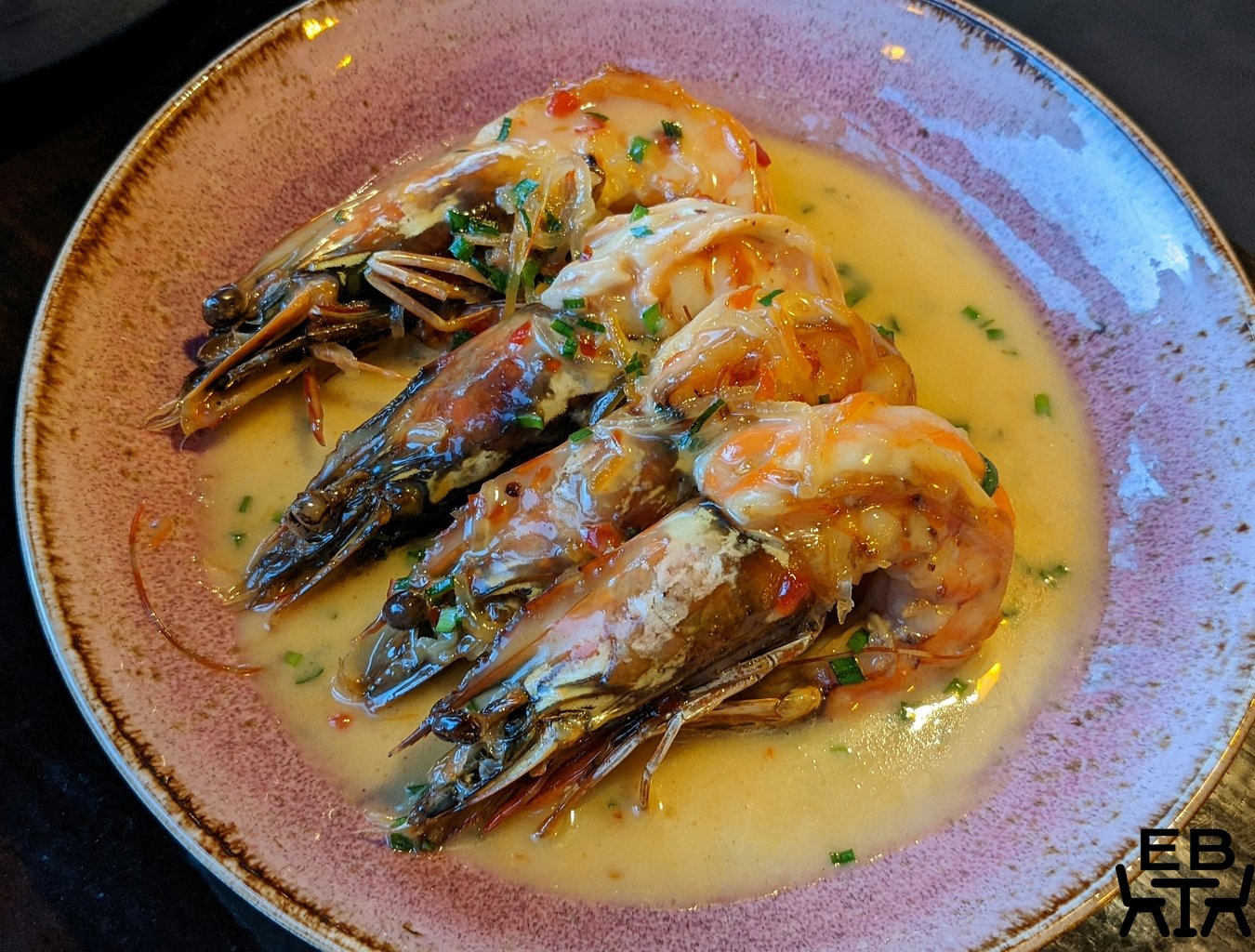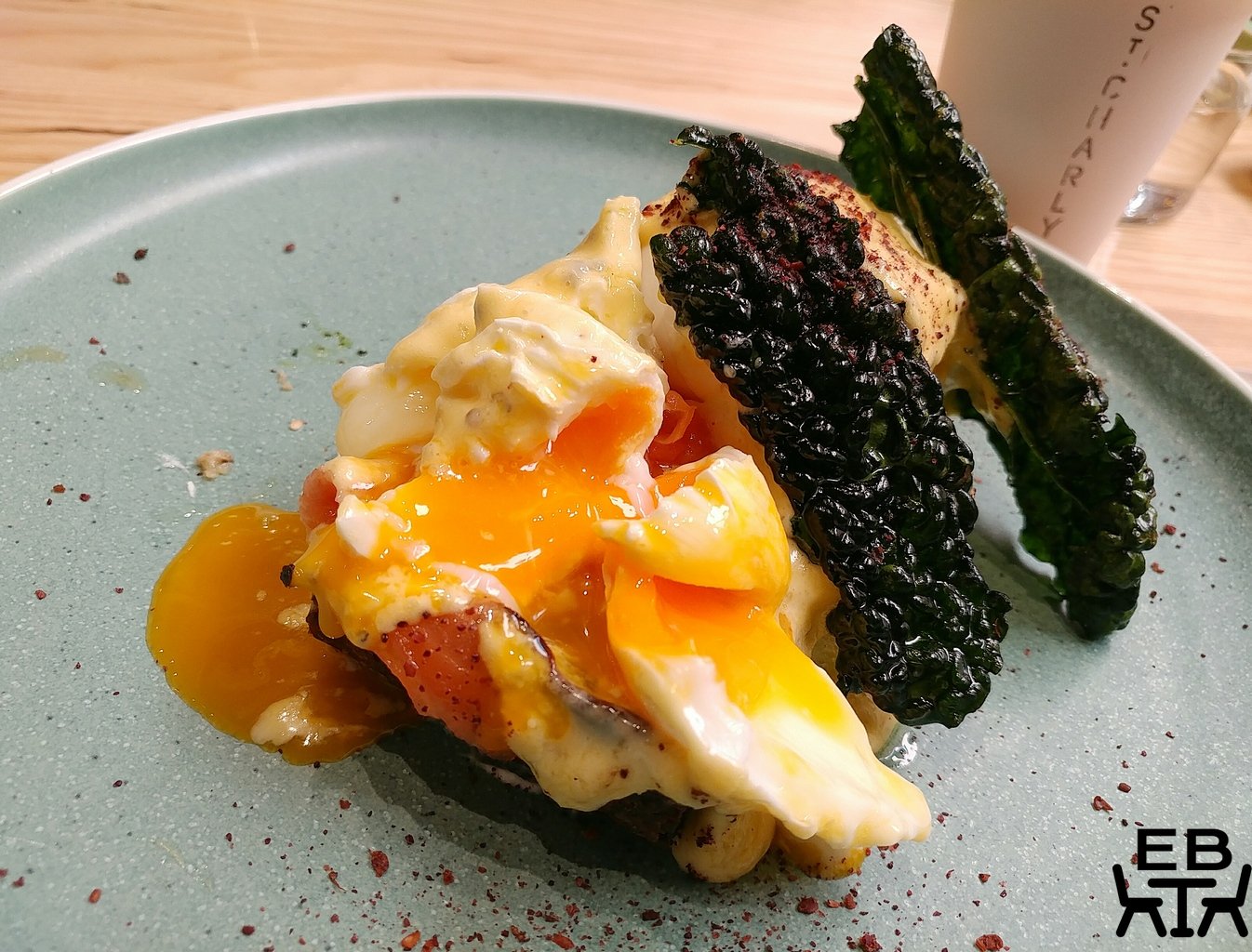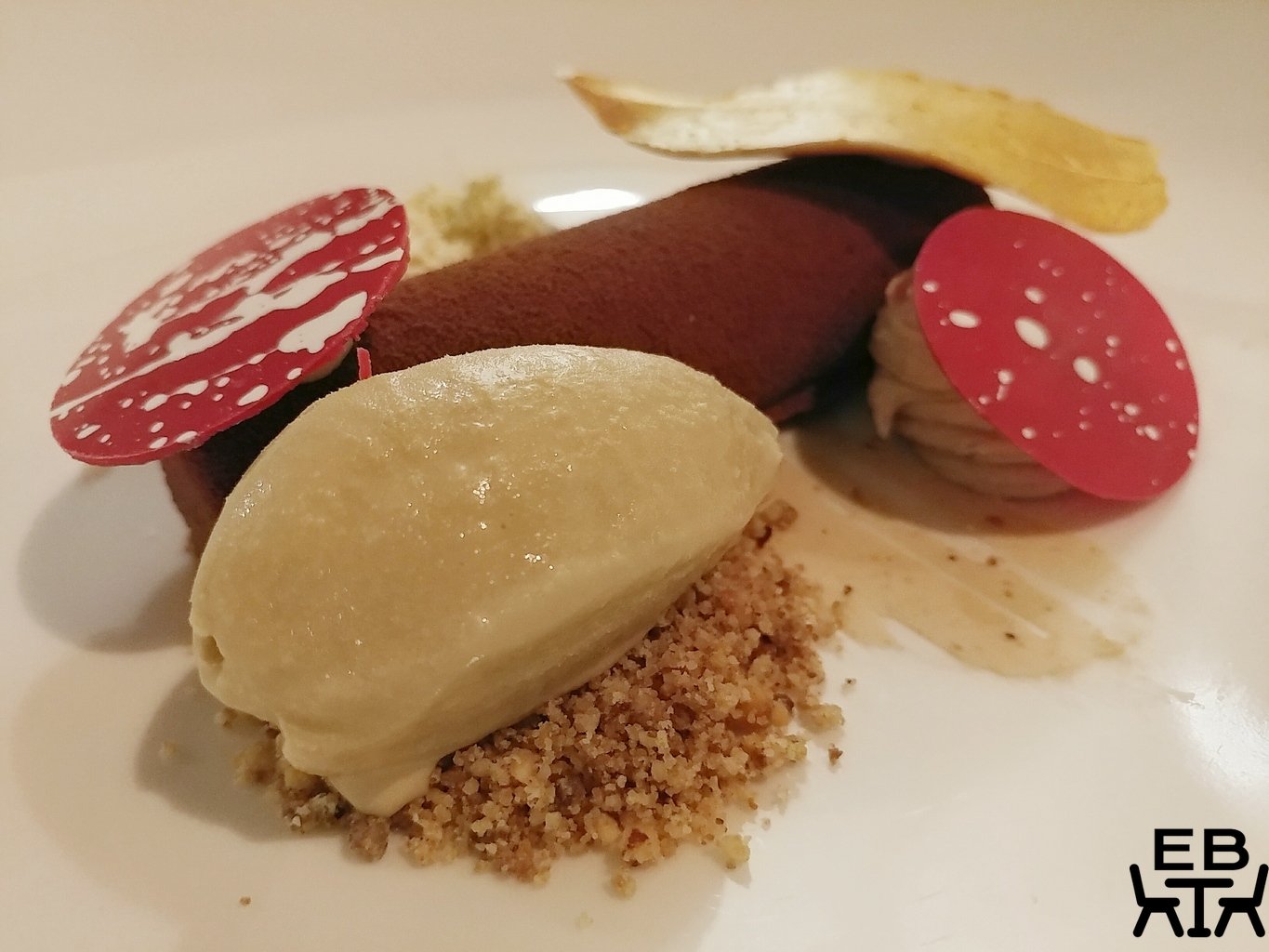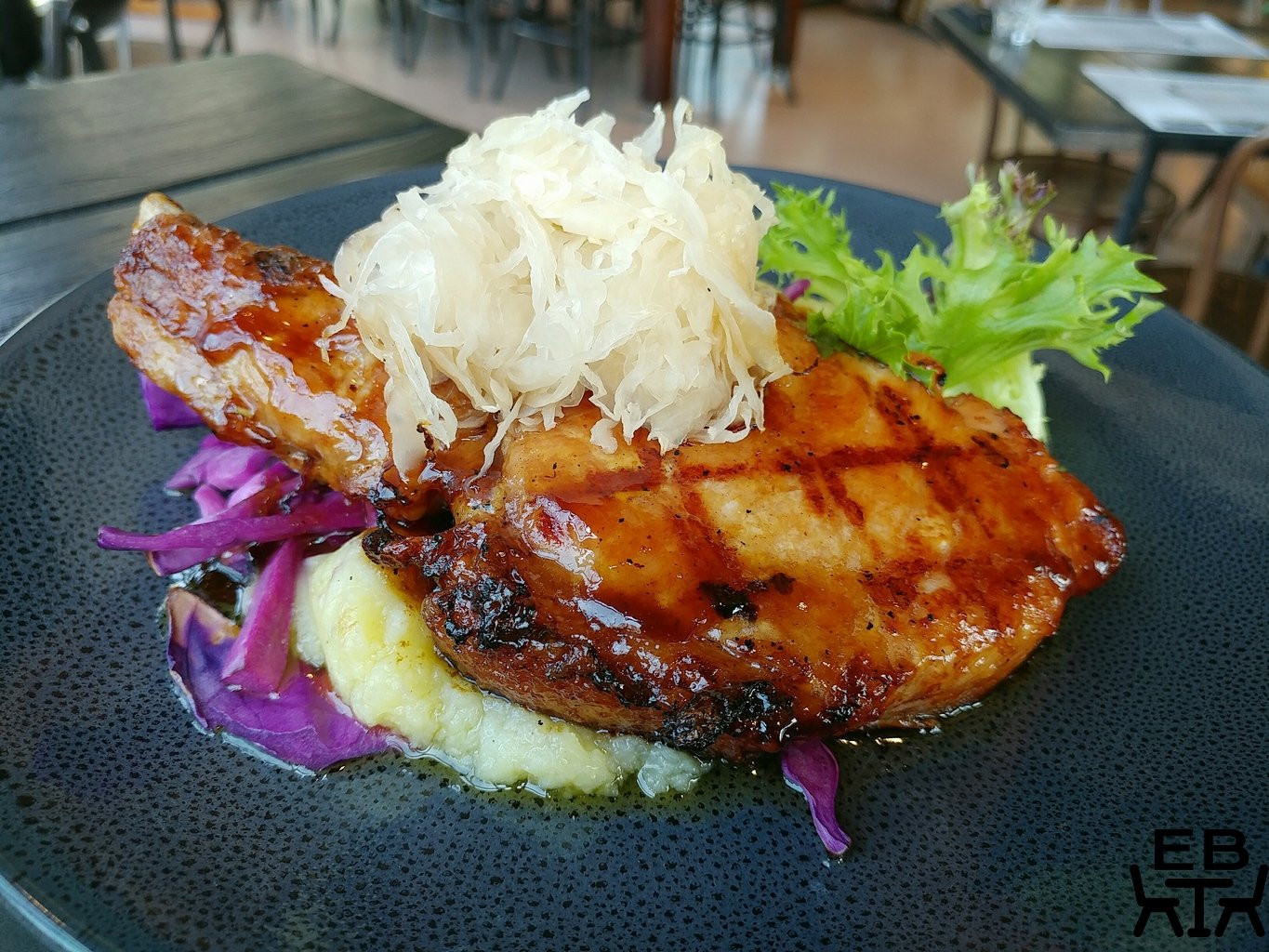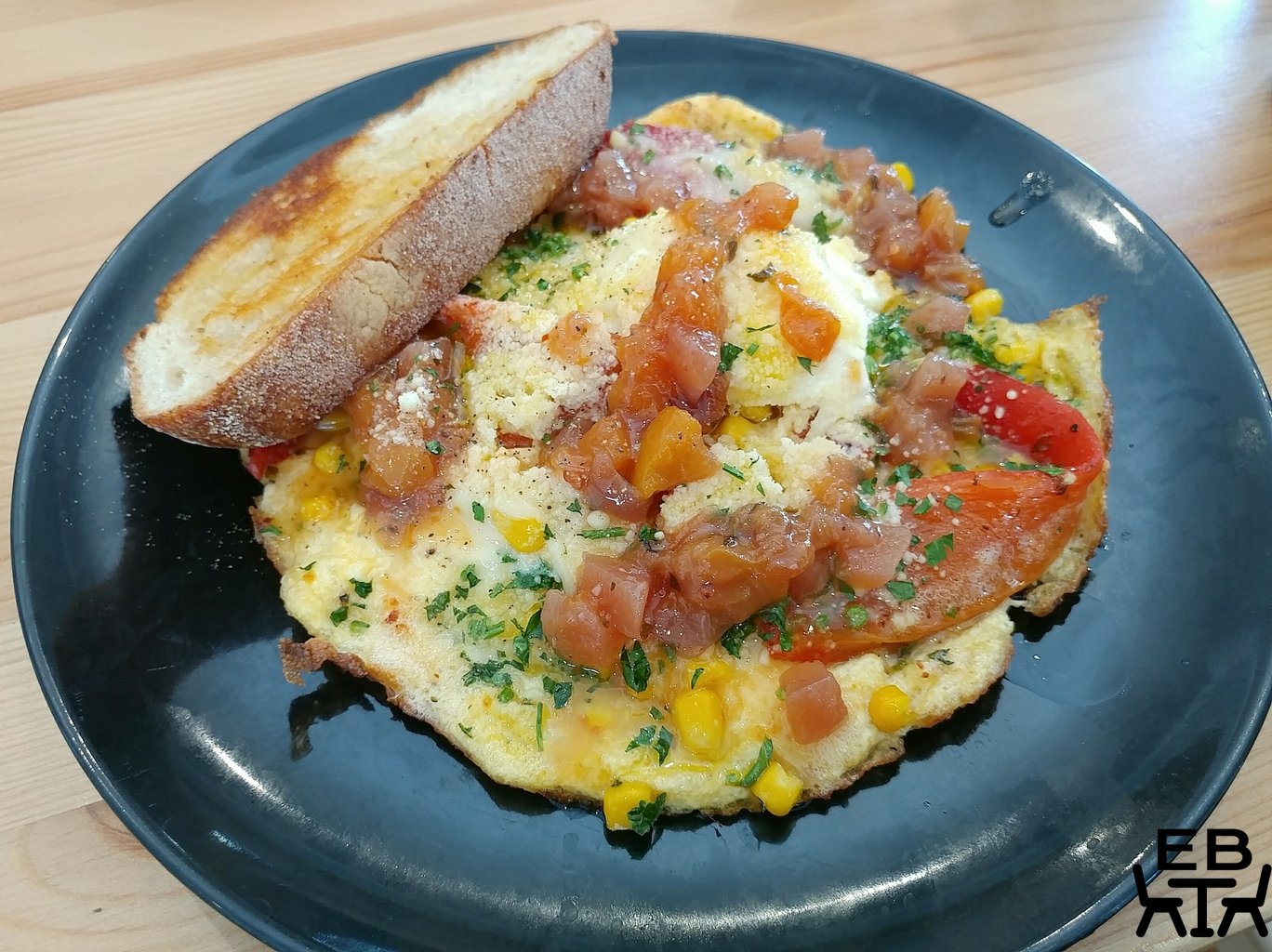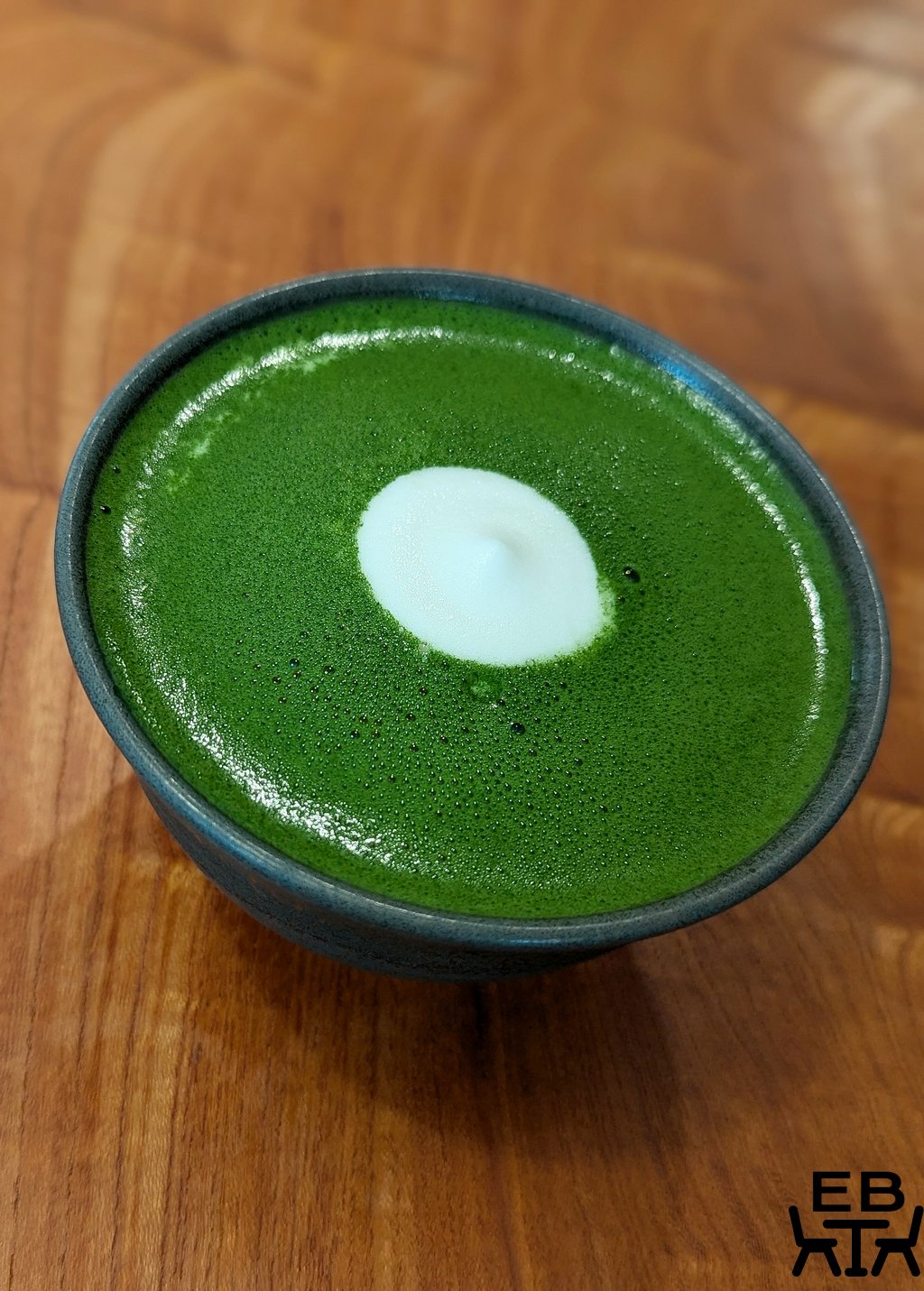Den was named the Best Restaurant in Asia in 2022, and Florilege was named third best in that same list. Den Kushi Flori, a collaboration between the head chefs of these two restaurants (three Michelin stars between them at these restaurants), and having a Michelin star of its own, easily made our list of restaurants to dine at on our trip.
Pre-reading, their cuisine is Japanese fusion, and based around skewers (the kushi in Den Kushi Flori). We anticipated an experience that would be delicious, and different from what we would be able to get outside of Japan. They have both lunch and dinner seatings, with lunch costing less, as is typical. With all the other things we had planned though, we could only book in for dinner.
Finding our way to the restaurant itself on the night was a challenge though. Google Maps helped us reach the building in Shibuya, but then figuring out where the restaurant was in the building was harder (it’s all well and good to see the dot in the building on the map, but getting to the dot is another thing). We walked around the entire building before finding the board listing the tenants in the building, which indicated that Den Kushi Flori was in the basement level. This in itself was not obvious, as the katakana characters were large and visible on the signboard, but the english lettering was not.

We made our way down the ordinary-looking stairs, and found ourselves in a landing area faced with two closed doors on different sides. Raucous voices came from behind one door, and we thought it more in keeping with a bar with drunken patrons, so we tried the other door – this turned out to be be another restaurant, and staff directed us to the other door when we asked the restaurant name.

When through the correct door, we were greeted by staff near the entrance and shown to our seats. The dining space of the restaurant was set up so that the table effectively ran around a central kitchen area, so every patron had a counter seat. It was an open kitchen, so you could see the food being prepared, and then plated up at a counter closer to where diners were seated.

Each place was set with chopsticks on a rest, a napkin, and a folded menu. Lemongrass-scented hand towels were brought to us.

The menu was cryptically vague, listing just ingredients, with no hints of how things would be prepared or combined. Perhaps it was a challenge to diners to use their imaginations..

Lively piano jazz played over speakers. Sadly, the atmosphere was ruined by a group of noisy diners at the other end of the counter, who carried on through the rest of the meal like drunks at a pub (as previously described) broadcasting the minutiae of their lives, rather than guests there to enjoy the food. Some stricter fine dining restaurants would have told them to tone it down, but unfortunately, that was not the case here. They were also clearly tourists, and perhaps the restaurant staff were trying to be polite, but it spoiled the experience for others.

Ikura. Lotus root. Celeriac.
This dish was plated with celeriac puree at the base, then fine strips of pickled lotus root made into a nest, with the ikura then placed like eggs in the nest (which technically, they were). Chive flowers topped it. This was quite a crisp start to the meal, with the flowers delivering some spice.



Foie gras. Soy milk. Green onion.
We were told that this was a soy milk chawanmushi, made without egg yolks, so only using the egg whites. A piece of foie gras rested on the surface. Dashi broth was poured over it at tableside, and chopped green onion stalks placed on top. The dashi quickly turned into a gel. The dish was a variety of soft textures. The chawanmushi in particular was lighter and more delicate than typical, due to its components. The dashi was lightly savoury, with a faint sweetness in the finish.


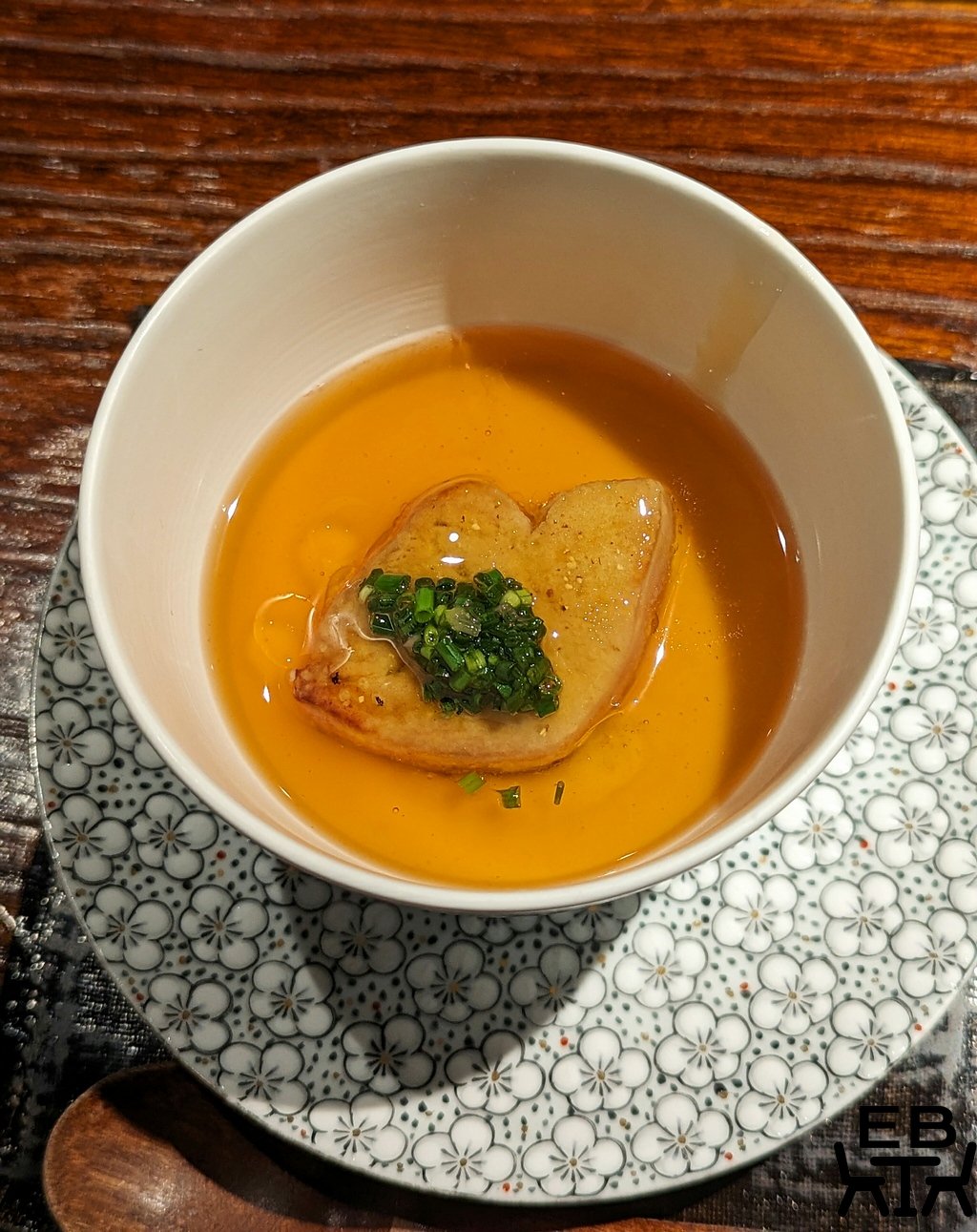

Sweet potato. Miso. Cheese.
This was definitely a fusion dish. The white miso soup had potato dumplings and potato cubes in it, and cottage cheese shavings on top. There were also a few spinach leaves placed on it. The potato dumplings and potato cubes had different softness. The cheese, when mixed in, added a tang that made it different from standard white miso soups, but not unpleasant.


Duck. Eggplant.
The chefs had come around to show us the smoked duck, nestled in straw, earlier in the course of the meal. This was the first skewer dish of the evening, composed of duck meatball, slices of duck meat, and slices of eggplant forming the layers between. This was slathered with an eggplant-based sauce, which was well emulsified and had almost a Worcestershire sauce flavour. The duck meatball was tender and properly seasoned, with slivers of onion inside for a hint of sweetness. The pieces of duck meat were perfectly cooked so they were still pink, and supple enough to be folded for the skewers.
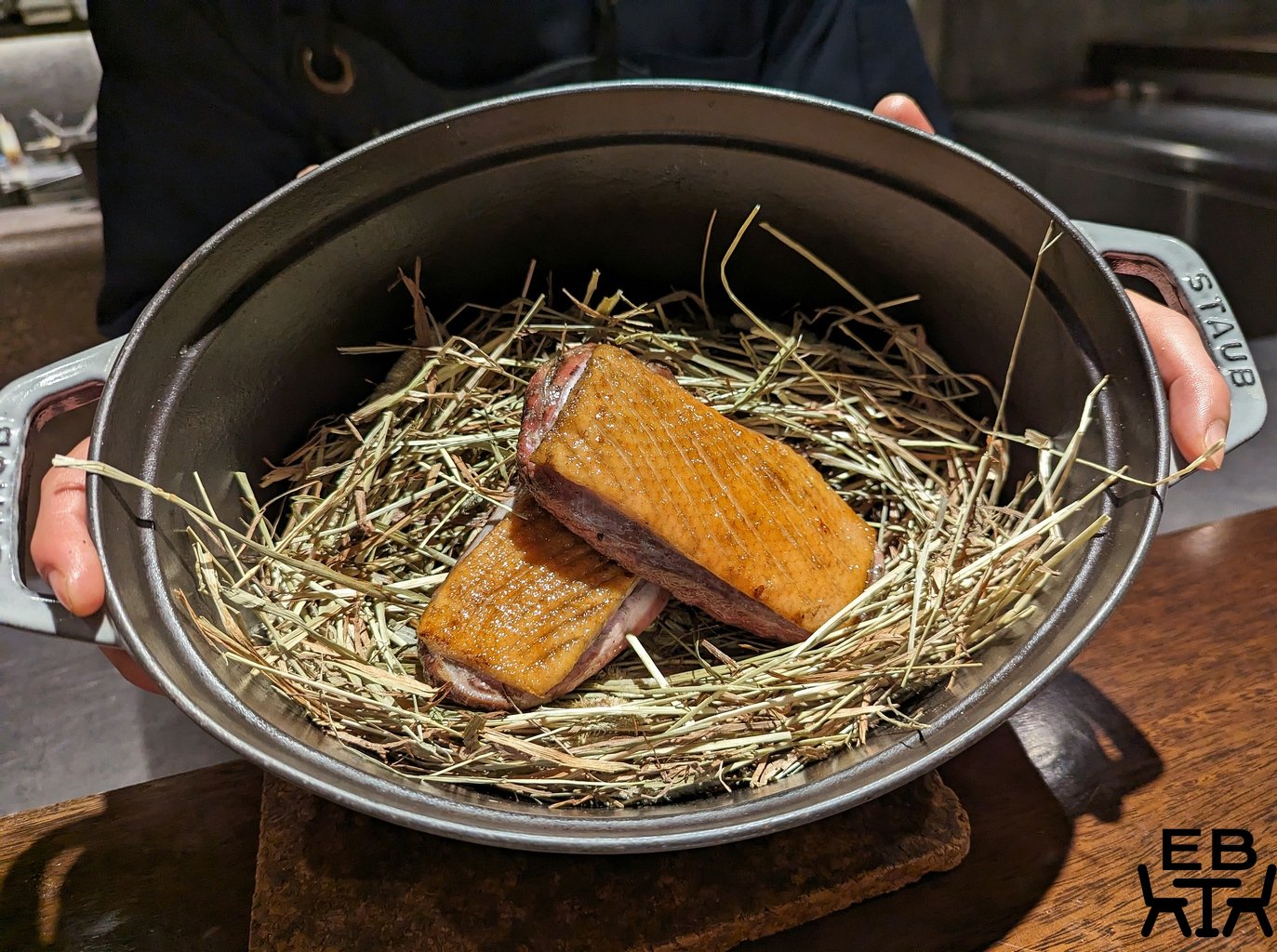



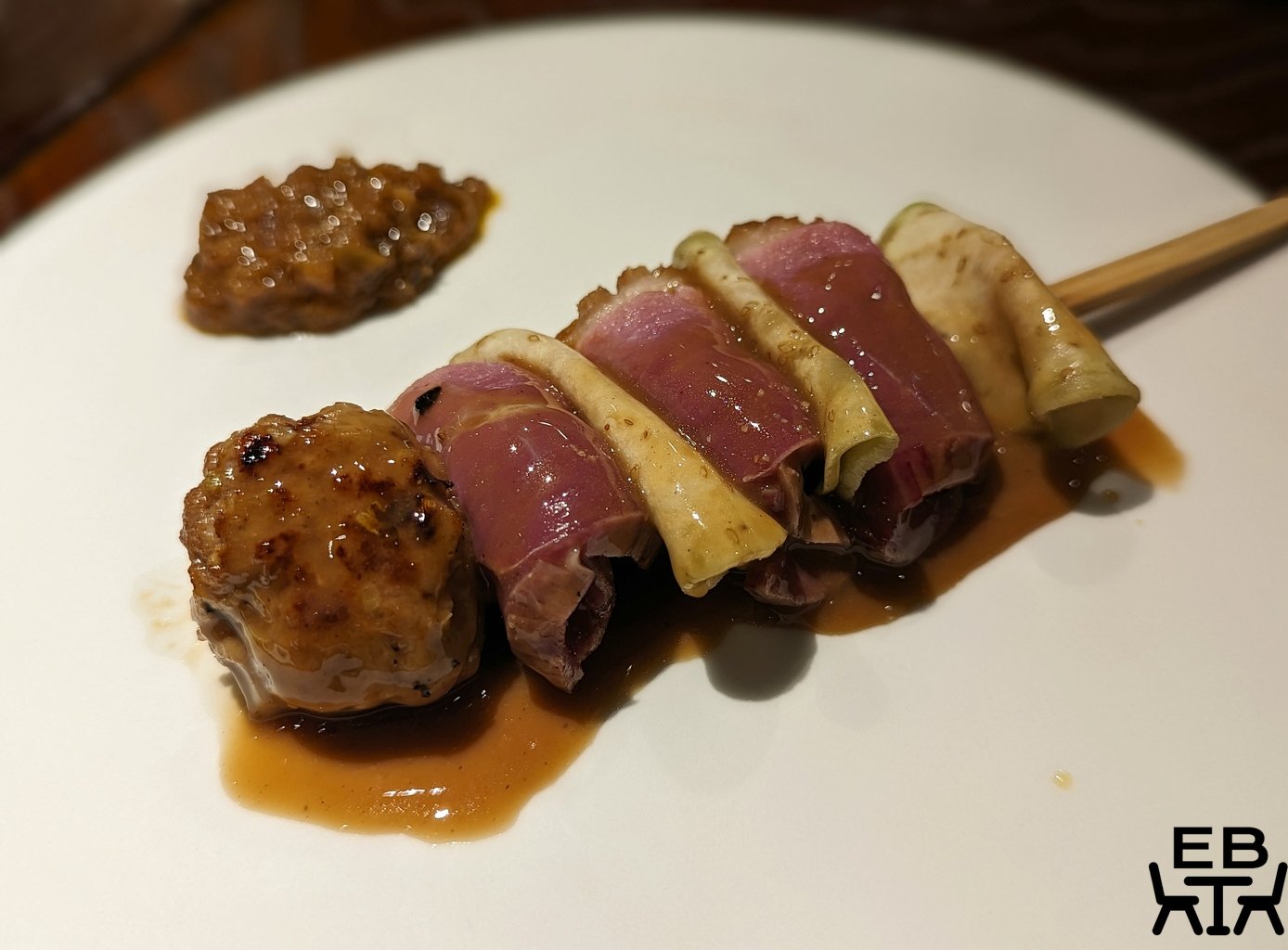
Eel (Unagi). Taro.
Instead of the usual methods of unagi preparation (often grilled or baked and then glazed), they stewed the unagi with cream. This was served with a skewer of fried taro balls. The cream sauce had a sweet and sour flavour, different again from the flavour combination you expect with unagi (often sweet and salty). The taro balls, which were more hemispheric in shape, retained crispness outside despite sitting in the sauce, so were a nice textural contrast.



Peanuts. Cabbage.
This dish turned out to be quite different from what you might expect from the stated components. On each skewer was peanut tofu, which were were told is a local dish in Okinawa. This was coated in panko crumbs and fried. Strips of cabbage pickled in apple vinegar formed a bed for the skewer, and in symmetry, thin slices of pickled apple were arranged on top. A dollop of seeded mustard was also placed on the dish for added flavour punch.



Clay pot rice. Fish. Mushroom.
Traditionally for kaiseki, the final course is a rice dish, often cooked in a clay pot. Here, they cooked smelt fish with the rice, then served it with the fish and rice all mixed together. It was impressive to see the intricate placement of the layer of little fish in the pot. Seeing it before they were mixed was also a good thing, because if you were just served the mixed rice, you wouldn’t have known how much fish went into it, except for hints of added textural crunch. We felt that it needed more seasoning as a whole though.


They also showed us the matsutake mushrooms, cooked separately, and then placed into the mushroom soup. These had pleasantly earthy flavours, but again, were light on the seasoning.



To finish off, we were given a serving of crispy rice from the bottom of the claypot. This was served with a sprinkle of salt. We were told that this was the best part of the dish, and it was certainly more delicious than at the beginning, with the added saltiness and crunch.

Dessert.
We were given the option of either daifuku or creme caramel. We each chose a different one so that we could share and try both.
The daifuku contained a blueberry ice cream with red bean, and it was served resting on a meringue base. Staff had helpfully cut it in half for us to share more easily.


The creme caramel was smooth, with a nicely soft texture. The sauce it was served with had an edge of bitterness, which contrasted the sweetness well. Of the two desserts, we preferred this one.


Overall, Den Kushi Flori was an interesting dining experience, but I think we had hoped for more in terms of flavour combinations and techniques. Some of the dishes were quite good, like the chawanmushi and the creme caramel. We weren’t really blown away by any of them though. Again, the atmosphere could have been better. For instance, Candlenut is another informal Michelin star restaurant, but it wasn’t as noisy, and patron management is part of restauranteur skills.
Scores:
Food: 2.5/4
Setting: 1/2
Service: 1.5/2
Total: 5/8
Price point: ¥12,100 per person for dinner (then add the 10% service charge), so about $128 AUD per person after conversion when we visited.
Value: Alright.
Details:
Address: Gems Aoyama Cross, B1F, 5-47-6 Jingumae, Shibuya, Tokyo
Phone: +81 3 6427 2788
Website: Den Kushi Flori
